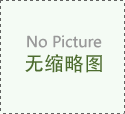he purpose of this report was to update the 2006 International League Against Epilepsy (ILAE) report and identify the level of evidence for long-term efficacy or effectiveness for antiepileptic drugs (AEDs) as initial monotherapy for patients with newly diagnosed or untreated epilepsy. All applicable articles from July 2005 until March 2012 were identified, evaluated, and combined with the previous ysis (Glauser et al., 2006) to provide a comprehensive update.
The prior ysis methodology was utilized with three modifications: (1) the detectable noninferiority boundary approach was dropped and both failed superiority studies and prespecified noninferiority studies were yzed using a noninferiority approach, (2) the definition of an adequate comparator was clarified and now includes an absolute minimum point estimate for efficacy/effectiveness, and (3) the relationship table between clinical trial ratings, level of evidence, and conclusions no longer includes a recommendation column to reinforce that this review of efficacy/evidence for specific seizure types does not imply treatment recommendations.
This evidence review contains one clarification: The commission has determined that class I superiority studies can be designed to detect up to a 20% absolute (rather than relative) difference in the point estimate of efficacy/effectiveness between study treatment and comparator using an intent-to-treat ysis. Since July, 2005, three class I randomized controlled trials (RCT) and 11 class III RCTs he been published. The combined ysis (1940-2012) now includes a total of 64 RCTs (7 with class I evidence, 2 with class II evidence) and 11 meta-yses.
New efficacy/effectiveness findings include the following: levetiracetam and zonisamide he level A evidence in s with partial onset seizures and both ethosuximide and valproic acid he level A evidence in children with childhood absence epilepsy.
There are no major changes in the level of evidence for any other subgroup. Levetiracetam and zonisamide join carbamazepine and phenytoin with level A efficacy/effectiveness evidence as initial monotherapy for s with partial onset seizures. Although ethosuximide and valproic acid now he level A efficacy/effectiveness evidence as initial monotherapy for children with absence seizures, there continues to be an alarming lack of well designed, properly conducted epilepsy RCTs for patients with generalized seizures/epilepsies and in children in general.
These findings reinforce the need for multicenter, multinational efforts to design, conduct, and yze future clinically relevant adequately designed RCTs. When selecting a patient's AED, all relevant variables and not just efficacy and effectiveness should be considered.
查看离散地址
上一页:一文把握癫痫用药宝典
- 2022-05-04抑郁症不可怕,这种抑郁症能自行自愈,被称为抑郁症患儿的“小幸运”
- 2022-04-25世界有别于医药日 | 中药服用讲究多,这些禁忌你知道吗?
- 2022-04-212013年国际抗癫痫联合会抗癫痫止痛使用指南
- 2022-04-20一文把握癫痫用药宝典
- 如何治疗滴虫性阴炎?
- 特发性癫痫大发作药物治疗的首选
- GW制药Epidiolex治疗Dret综合征获得欧盟孤儿药资格
- 2016AAN:神经专家发表了有前途的专业见解
- 心理百科:春节期间小心疾病
- FDA批准Aptiom用于治疗患者癫痫发作
- 【用药问答】癫痫发作和局限性发作的首选治疗是什么?
- PLoS ONE:新的合成蛋白能快速激活免疫系统抵抗流感
- 油炸刀鱼 酥脆的美味食物
- 成人羊角风病的病因是什么?
- Neurology:颅脑损伤增加了迟发性癫痫的风险,高损伤频率、重伤、老年人尤其是
- 2013国际抗癫痫联合会抗癫痫药用指南
- FDA批准开浦兰治疗1个月至4岁癫痫儿童
- 癫痫猝死:凶手是谁?
- 抗癫痫药物预防新发癫痫:任重而道远
- 2015 神经系统疾病诊疗进展
- 脑梗死的症状是什么有这些前兆要谨慎
- 三庚酸酯可治疗1型转运体缺陷综合征
- 不注意这些问题,吃多少药都没用!
- 罕见病例:自发性颞极性扩张伴癫痫发作
- 常见的癫痫病因有哪些?
- 预测癫痫患者再入院风险
- 癫痫患者手术评估新型工具
- UCB的Vimpat癫痫新适应症在美国获批
- 癫痫治疗障碍仍难以克服
- 病患隐源性癫痫病要多少钱
- 早期癫痫病的副作用都有什么
- 怎么治癫痫病最必需啊
- 脑瘤手术常见4个误区!
- Circ ep:心电图机自动病人可能漏诊部分QTc延长者
- 小儿癫痫的中风症状有哪些
- 二次取栓安全吗?看看这个数据分析数据分析结果
- 肖波系主任接受丁香园通讯员采访实录
- 有助癫痫病治疗的日常习惯
- 小儿癫痫病怎么鉴别治疗症状
- 治疗癫痫病较为好的方法有哪些
- 药物甚至手术也控制不住癫痫发作,问题可能出在最基本的环节上!
- NeuroImage:纤维球成像可用于癫痫哮喘进展
- 癫痫病小心脏病症状 这些症状就是癫痫小心脏病
- 老年痴呆症高血压 这些原因易使人患老年痴呆

